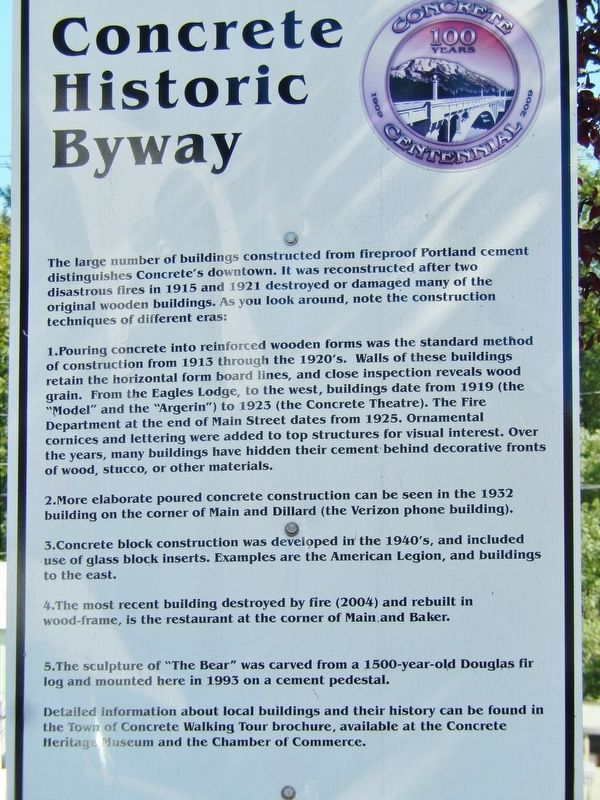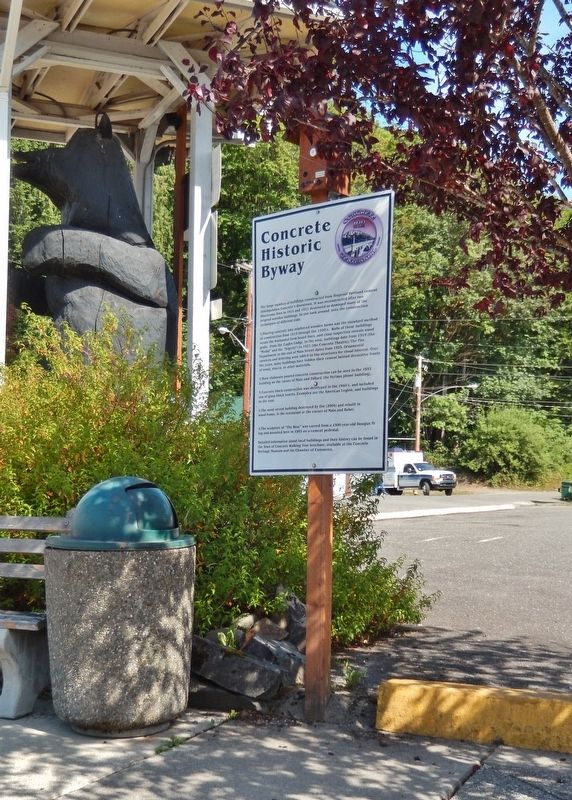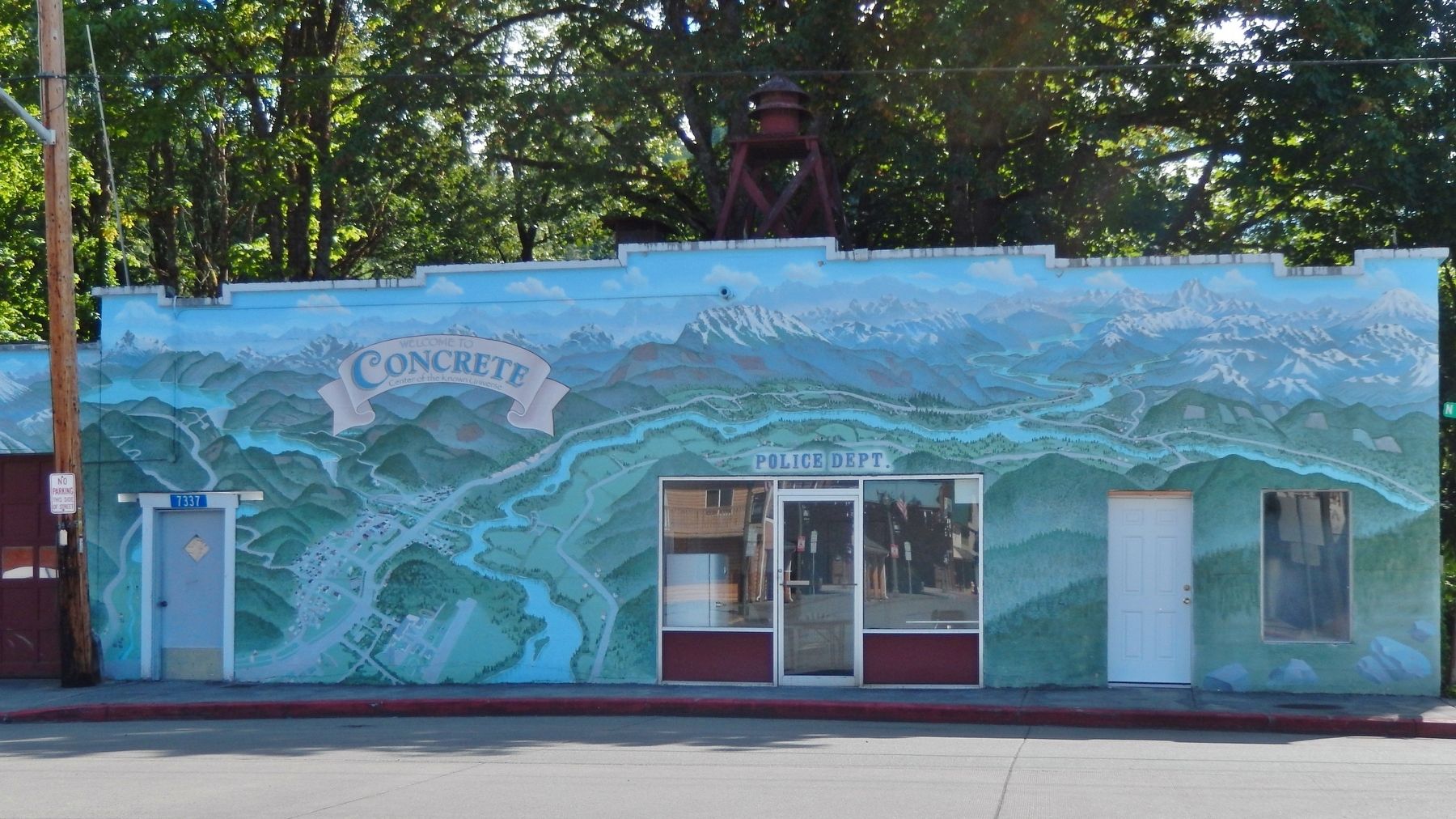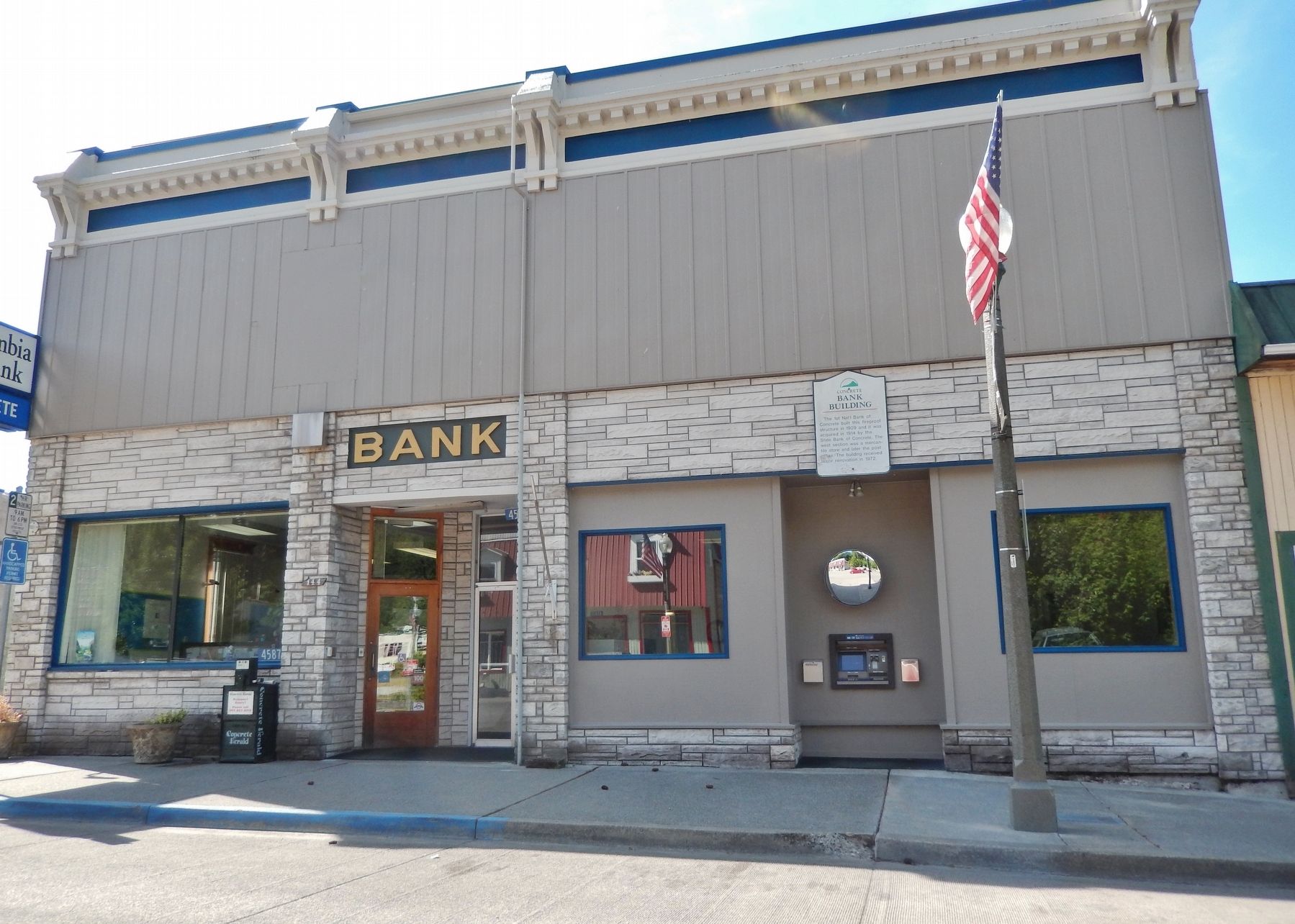Concrete in Skagit County, Washington — The American West (Northwest)
Concrete Historic Byway
The large number of buildings constructed from fireproof Portland cement distinguishes Concrete's downtown. It was reconstructed after two disastrous fires in 1915 and 1921 destroyed or damaged many of the original wooden buildings. As you look around, note the construction techniques of different eras:
1. Pouring concrete into reinforced wooden forms was the standard method of construction from 1913 through the 1920's. Walls of these buildings retain the horizontal form board lines, and close inspection reveals wood grain. From the Eagles Lodge, to the west, buildings date from 1919 (the "Model" and the "Argerin") to 1923 (the Concrete Theatre). The Fire Department at the end of Main Street dates from 1925. Ornamental cornices and lettering were added to top structures for visual interest. Over the years, many buildings have hidden their cement behind decorative fronts of wood, stucco, or other materials.
2. More elaborate poured concrete construction can be seen in the 1932 building on the corner of Main and Dillard (the Verizon phone building).
3. Concrete block construction was developed in the 1940's, and included use of glass block inserts. Examples are the American Legion, and buildings to the east.
4. The most recent building destroyed by fire (2004) and rebuilt in wood-frame, is the restaurant at the corner of Main and Baker.
5. The sculpture of "The Bear" was carved from a 1500-year-old Douglas fir log and mounted here in 1993 on a cement pedestal.
Detailed information about local buildings and their history can be found in the Town of Concrete Walking Tour brochure, available at the Concrete Heritage Museum and the Chamber of Commerce.
Topics. This historical marker is listed in these topic lists: Architecture • Disasters • Man-Made Features.
Location. 48° 32.337′ N, 121° 44.763′ W. Marker is in Concrete, Washington, in Skagit County. Marker is at the intersection of Main Street and Baker Drive, on the right when traveling west on Main Street. Marker is a metal plaque, mounted at eye-level on a pole, located at the northeast corner of the intersection. The large wooden Bear Sculpture is beside the marker and there is a parking lot behind the marker. Touch for map. Marker is at or near this postal address: 45951 Main Street, Concrete WA 98237, United States of America. Touch for directions.
Other nearby markers. At least 2 other markers are within walking distance of this marker. Concrete Bank Building (about 300 feet away, measured in a direct line); Safety Follows Wisdom (approx. half a mile away).
Related markers. Click here for a list of markers that are related to this marker.
Concrete, Washington Main Street Architecture
Also see . . .
1. Concrete Main Street Buildings.
Prior to 1921, several fires destroyed most of the original wooden buildings which had lined Main Street. Since concrete was in ample supply, it was decided that subsequent commercial buildings would be made from this nonflammable material. Three of the oldest wood frame structures which escaped the fires include the Baker Street Grill, the Assembly of God Church, and the town Hall & Library. The Main Yard, near Silo Park, is the only surviving wooden structure of a business district called Superior Addition. (Submitted on April 20, 2018, by Cosmos Mariner of Cape Canaveral, Florida.)
2. Concrete, Washington.
The town of Concrete has undergone several incarnations, the earliest being a settlement at the northwestern junction of the Baker and Skagit Rivers, known as "Minnehaha." In 1905, a settlement across the Baker River came into being due to the building of the Washington Portland Cement Company and was named "Cement City." After the Superior Portland Cement Company plant was built in Baker in 1908, it was decided to merge the two towns. Inhabitants of the new community settled on the name "Concrete" and the town was so christened and officially incorporated on May 8, 1909 (Submitted on April 20, 2018, by Cosmos Mariner of Cape Canaveral, Florida.)
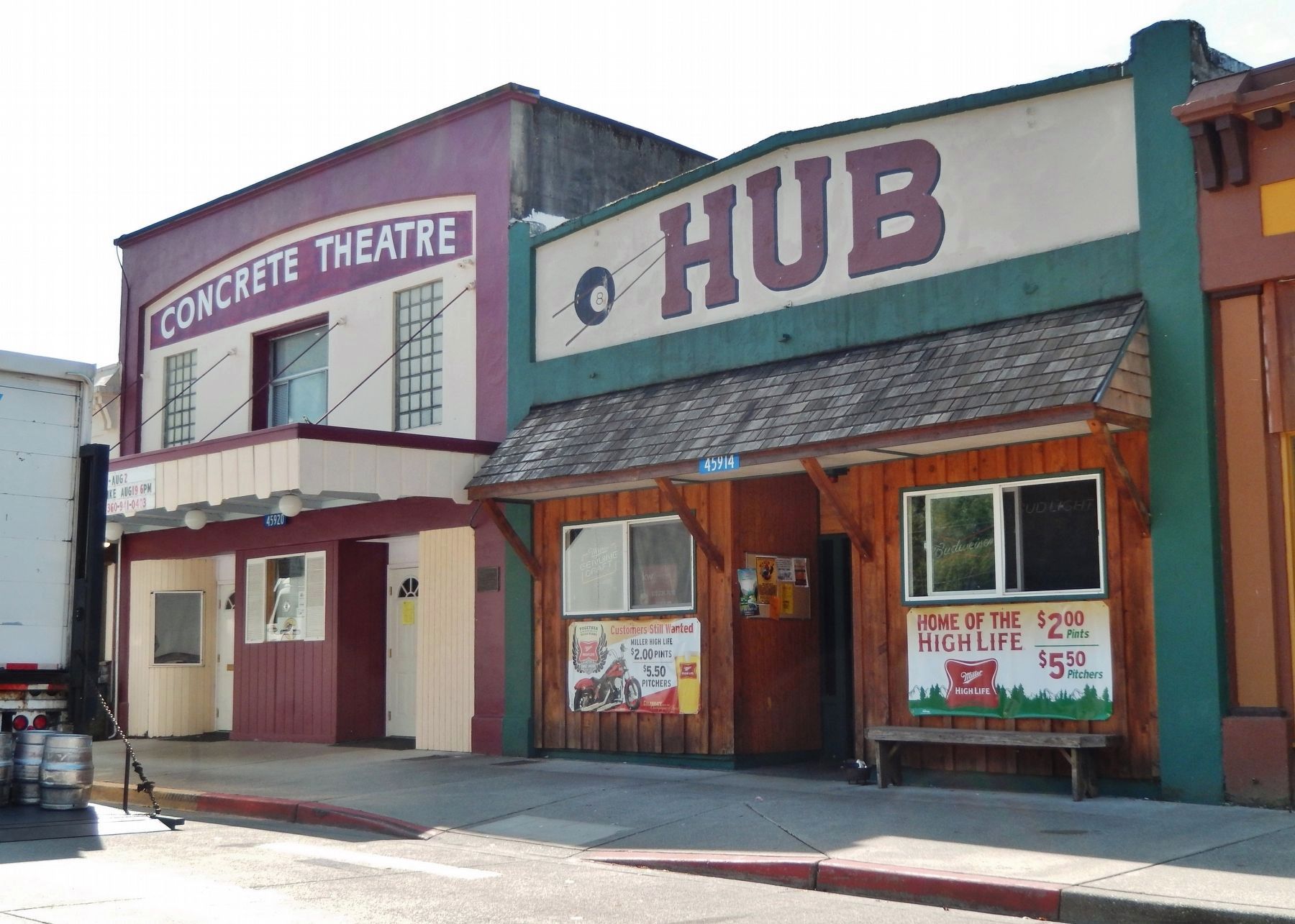
Photographed By Cosmos Mariner, July 28, 2015
3. Concrete Theater Building
Originally built in 1923, the stage of the Concrete Theatre has entertained audiences with vaudeville, boxing matches, silent films and later what were known as "the talkies". The building is listed on the Washington Heritage Register.
3. Two small industrial communities merge to form the Town of Concrete in 1909.
Concrete originally had buildings made of wood. A series of fires on Main Street before 1921 persuaded the town to turn to concrete as its building material. The historic town now has many concrete buildings as well as a concrete bridge spanning the Baker River, the Henry Thompson Bridge, built 1916-1918 and now listed on the National Register of Historic Places.
Concrete gained wider recognition when the writer Tobias Wolff, who attended Concrete High School, described life in the region in This Boy's Life. Wolff's memoir was made into a film (shot in Concrete) in 1993. (Submitted on April 20, 2018, by Cosmos Mariner of Cape Canaveral, Florida.)
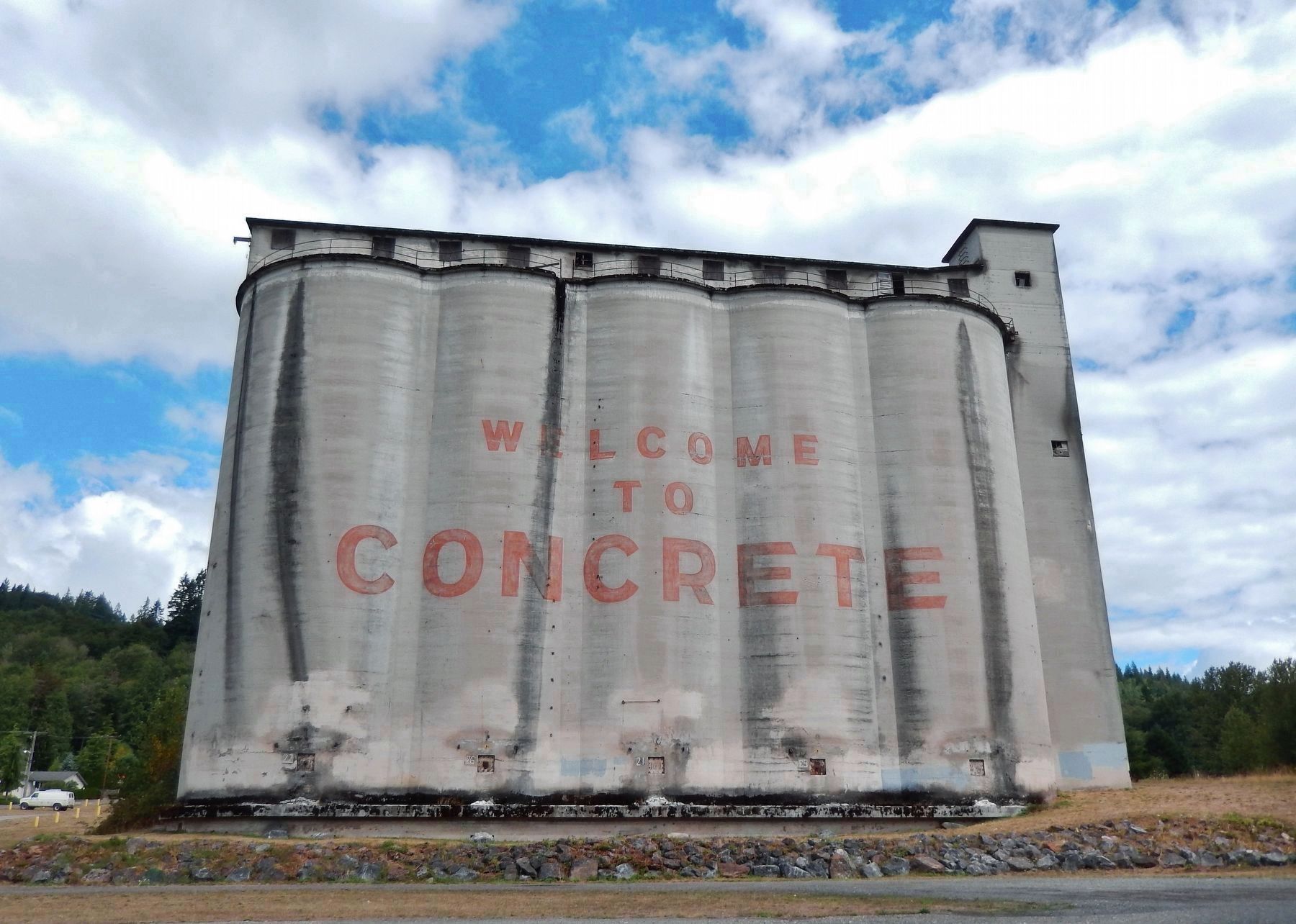
Photographed By Cosmos Mariner, July 27, 2015
6. Portland Superior Cement Silos
Now known as Silo Park, this was the site of Concrete’s second cement plant, completed in 1908, and later operated by Lone Star Northwest until 1967. Remaining structures include the silos, office building, power generator building, and safety sculpture. The words "Welcome to Concrete" were painted on for the filming of "This Boy's Life"
Credits. This page was last revised on April 20, 2018. It was originally submitted on April 19, 2018, by Cosmos Mariner of Cape Canaveral, Florida. This page has been viewed 541 times since then and 62 times this year. Last updated on April 20, 2018, by Cosmos Mariner of Cape Canaveral, Florida. Photos: 1, 2, 3, 4, 5, 6. submitted on April 20, 2018, by Cosmos Mariner of Cape Canaveral, Florida. • Andrew Ruppenstein was the editor who published this page.
